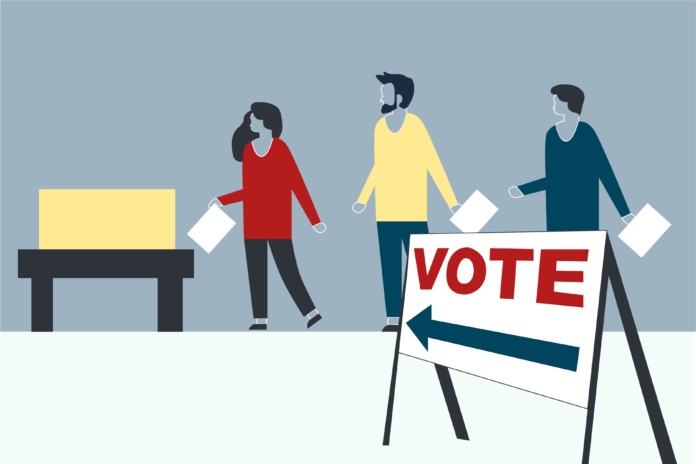The battle to mobilize voters this November is already on
With all the uncertainty regarding the 2020 presidential election, there is one surefire guarantee: The outcome will depend on how well either side can mobilize non-voters.
America’s hyperpolarization has effectively limited the number of persuadable voters over the last several election cycles. To put it simply, the vast majority of Americans remain anchored to their partisan allegiances, leaving two groups up for grabs: swing voters and non-voters.
Swing voters are who we traditionally think of when we look at the impact of electoral campaigning. In past elections, they are what one might call Reagan Democrats or Obama-Trump voters. Oftentimes, they are non-ideological or belong to the socially conservative, fiscally liberal-to-moderate constituency. Their exact numbers are debated, but analysts generally agree that they are a declining portion of registered voters.
Geoffrey Skelley of FiveThirtyEight puts the number of voters who shifted from voting for one party in 2012 to another in 2016 at around 7% of the electorate, while Lee Drutman of The New York Times estimates this value at about 5.5%. The majority of these voters, of course, supported Donald Trump in 2016.
The other decisive group consists of non-voters. This group represents an enormous share of the American population — about 43% of eligible voters did not turn out for the 2016 presidential election. Non-voters tend to be disproportionately non-white, less educated, younger and poorer than active voters. Conventional wisdom would suggest that this is a natural Democratic constituency, as the party’s voting bloc is substantially younger and more diverse than Republicans. Regional differences, however, challenge this assumption.
While an overwhelming amount of evidence suggests that non-voters are more likely to favor Democrats, this trend reverses among constituents in swing states. Here, a large portion of non-voters actually favor President Trump in 2020. The exact causal relationship behind this trend is unknown. Some analysts theorize it has to do with the fact that a larger share of non-voters in swing states are white voters or that non-voters here are more likely to be energized by insurgent candidates that they see as violating the status quo.
Some within the Trump campaign are well aware of these trends. Despite general opposition to broader voter engagement, as demonstrated by Trump’s resistance to the prospects of vote by mail, the president’s re-election campaign has still targeted potential supporters among 2016 non-voters. Officials are not focusing their efforts on increasing broad turnout but instead are aiming to directly increase registration solely among likely supporters. Likewise, Trump campaign manager Brad Parscale has developed an intricate digital database intended to collect and contact potential first-time Trump voters.
The president’s staff is also making appeals to minorities, even though it likely won’t result in any substantial increase in support. The Trump campaign has made concessions to black voters through outreach programs and advertisement investments aimed at highlighting legislation like the First Step Act. These efforts are probably not aimed at winning over new voters but rather at changing the administration’s depiction as an existential threat to minorities. In doing so, they may hope that eliminating this stigma will depress black voter turnout and appease white moderates who might otherwise feel guilty for supporting the president.
The Biden campaign likewise faces an uphill battle to spur enthusiasm this fall. While the former vice president’s moderate stances appeal to older voters, his path to the nomination has highlighted the division between centrists and progressives in the Democratic Party. Enthusiasm for Biden is weak among young voters, with a substantial number of them already vowing to abstain from voting in this year’s election. Older voters may remain the most consistent demographic, but a substantial loss of youth and minority voters could doom Biden in 2020 the same way it did Clinton in 2016.
It is still much too early to determine how voters will act this November. As 2016 proved, polling data can be wildly inconsistent and misleading, and it is impossible to know just how much black swan events like the current COVID-19 pandemic can sway elections in the near future. Still, one thing remains certain: Increased voter turnout will be the not-so-hidden secret to victory in 2020. The question is who can get there first.
Written by: Brandon Jetter — brjetter@ucdavis.edu
Disclaimer: The views and opinions expressed by individual columnists belong to the columnists alone and do not necessarily indicate the views and opinions held by The California Aggie




